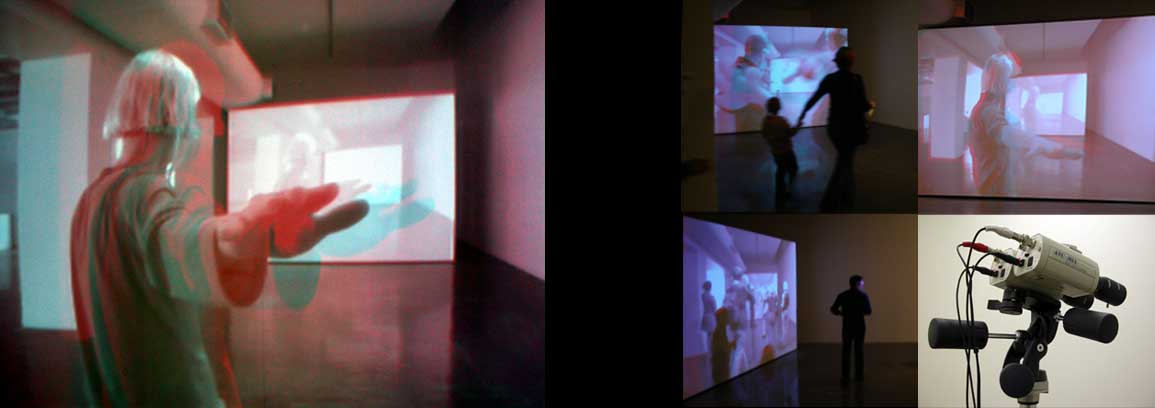

THE MIRRORED ROOM (2004)
Tin Sheds Gallery, Sydney, Australia.
The idea for this work began with a fascination for optical devices and other visual systems that change our ordinary experience of the world around us. When you look through a pair of binoculars distant objects are brought closer, appearing only a few metres in front of your eyes. This intended effect is accompanied by another incidental effect - the objects seem flattened, arranged in distinct parallel planes stacked one behind the other as if they were pieces of stage scenery. It is these incidental effects that interest me.
The uncanny effects of technically mediated vision are all around us. Glimpsing your image on one of the surveillance monitors that have become standard equipment in public places can be a strangely disconcerting experience. The grainy black and white image captured by the camera takes on a sinister tone. Seen from above by the wide angle lens its easy to imagine yourself implicated in a crime.
In the Mirrored Room two surveillance cameras create a mirror image of the gallery space and its inhabitants. Reversing the usual roles of viewer and viewed, the visitors to the gallery are captured in the image. Invited to don a pair of anaglyph glasses (the kind used to view 3D movies) visitors interact with a stereoscopic image of themselves that floats out in front of the screen or at other times sinks back into a illusion of space beyond the screen. Immersed in the space of the image, the viewer is an active participant in the work. Ideas of immersion and interaction are common themes in the rhetoric surrounding new media. Here however, the reference is to older technologies of vision – to the photographic and televisual images that both disrupt and expand our ordinary experience of space and time.